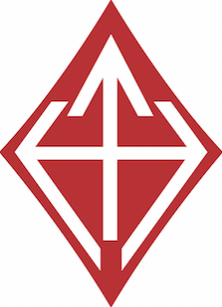DO NOT CROSS (2025)
The installation presents a provocative reinterpretation of the traditional Christian cross, now positioned on its side and bearing not the figure of Christ, but a lifelike cow. This arresting substitution draws direct parallels between the crucifixion and the daily sacrifice of animals for human consumption, positioning the cow as a modern surrogate for Christ — a passive victim offered up for a collective moral reckoning.
The cross rests in scorched earth, evoking devastation and desecration. Surrounding the piece is a red-and-black wooden frame — a clear allusion to police crime scene tape. The red border doubles as a reference to the “red line,” a global symbol for the point of no return, here serving as a warning against moral and environmental transgression.
Framed as a literal crime scene, the installation is punctuated with numbered evidence markers. These markers recall those used in forensic investigations, yet rather than representing the traditional fourteen Stations of the Cross, they instead point to the four real-life attacks on earlier versions of the work. This shift implicates not only the historical sacrifice depicted but also the contemporary violence directed at the artwork itself.
Do not cross
2025
Fibreglass/steel/wood/acrylic
400 x 200 x 220 cm
In 2017, Belgian artist Tom Herck debuted Holy Cow, a controversial installation featuring a crucified cow in a long-unused church. Intended as a commentary on the decline of western religion and society, the work drew 1,800 visitors over five weekends and became international news. Reactions ranged from tears to outrage, with some seeing it as provocative or blasphemous. The backlash escalated into vandalism, break-ins, and even arson, forcing part of the show to close. Devout Catholics protested, while Herck and supporters guarded the piece. Despite the chaos, the exhibition continued, ending with a symbolic purification of the church. Holy Cow became more than an art show—it was a flashpoint for debate, emotion, and the power of art to provoke.
Holy Cow
2017
Fibreglass (polyster) 490 x 235 x 90 cm
81 m2 Bath mixed with milk, water and milk powder.
© Photos by Sebastien Steveniers, Erik Jamar, Johan Hespeel, Raymond Lemmens.
















